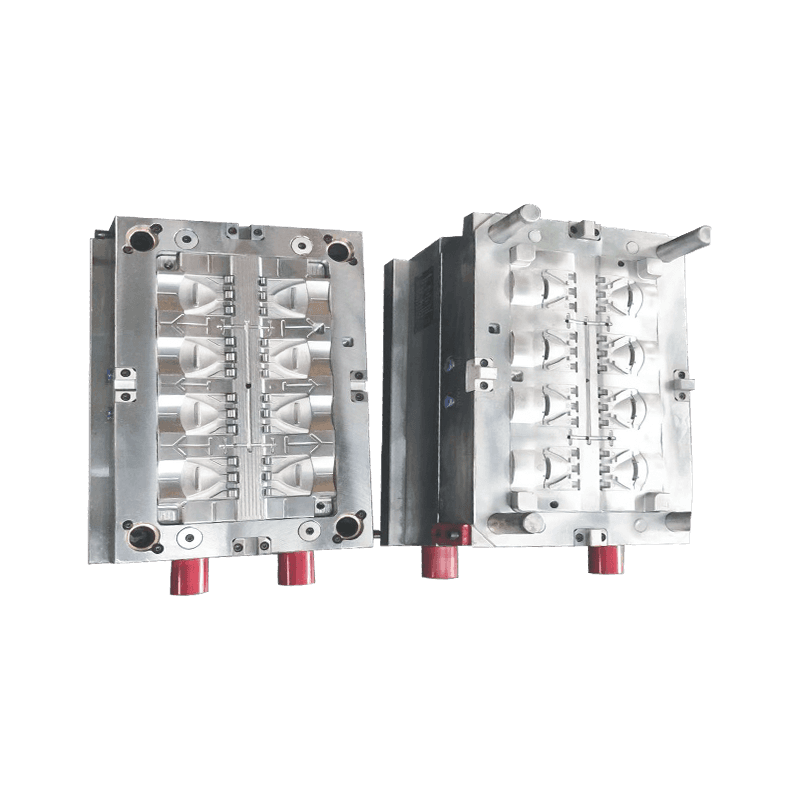We are committed to providing customers with high-quality, precision mold solutions.
Toolbox Molds
Cat:Toolbox And Accessories Mold
Toolbox molds encompass a variety of types designed to produce different styles and sizes of toolbox...
See Details
Die casting is a manufacturing process that has been refined over the years to produce precision components with high accuracy and detail. One of the critical components in this process is the die cast mold, particularly the Toolbox Latch Die Cast Molds Maker. These molds are responsible for creating the latches that secure toolboxes, ensuring they are robust, durable, and reliable.
Toolbox Latch Die Cast Molds Maker is a specialized field within the die casting industry. These makers are responsible for designing and creating molds that are used to produce latches for toolboxes. The molds must be precise to ensure that the latches fit and function as intended. The Toolbox Latch Die Cast Molds Maker must consider various factors, including material selection, mold design, and the manufacturing process.
Material Selection for Toolbox Latch Die Cast Molds
The choice of material for the Toolbox Latch Die Cast Molds is crucial. The material must be able to withstand the high pressures and temperatures involved in the die casting process. Typically, steel alloys are used due to their strength, durability, and heat resistance. The material selection directly impacts the quality and lifespan of the molds.
Designing Toolbox Latch Die Cast Molds
The design of the Toolbox Latch Die Cast Molds is a complex process that requires a deep understanding of the latch's function and the die casting process. The design must account for the intricate details of the latch, ensuring that it can be ejected from the mold without damage. The design also includes the gating system, which is how the molten metal is introduced into the mold, and the cooling channels, which are essential for the cooling process.
The Die Casting Process
The die casting process involves several steps, each critical to the final product's quality. The process begins with the preparation of the mold, which includes applying a release agent to ensure easy ejection of the finished latch. The mold is then closed, and the molten metal is injected under high pressure into the mold cavity.
Heating and Cooling of Toolbox Latch Die Cast Molds
The heating and cooling of Toolbox Latch Die Cast Molds is a critical aspect of the die casting process. The mold must be heated to a specific temperature to ensure that the molten metal flows smoothly into the mold's intricate details. The temperature must be carefully controlled to prevent the mold from overheating, which could bring about warping or other defects.
Once the molten metal has been injected into the mold, the cooling process begins. The mold is designed with cooling channels that circulate a coolant to rapidly cool the metal. This rapid cooling is essential for achieving the desired hardness and strength in the latch. The cooling process also helps to reduce the cycle time, increasing the efficiency of the die casting process.
Post-Processing of Toolbox Latch Die Cast Molds
After the latches have been cooled and solidified, they are ejected from the mold. The Toolbox Latch Die Cast Molds Maker must then inspect the latches for any defects or inconsistencies. Any necessary post-processing, such as trimming, deburring, or polishing, is performed at this stage.
Maintenance of Toolbox Latch Die Cast Molds
Proper maintenance of the Toolbox Latch Die Cast Molds is essential for ensuring their longevity and consistent performance. The molds must be cleaned regularly to remove any residue from the die casting process. Additionally, the molds should be inspected for wear and tear and repaired or replaced as needed.
Contact Us